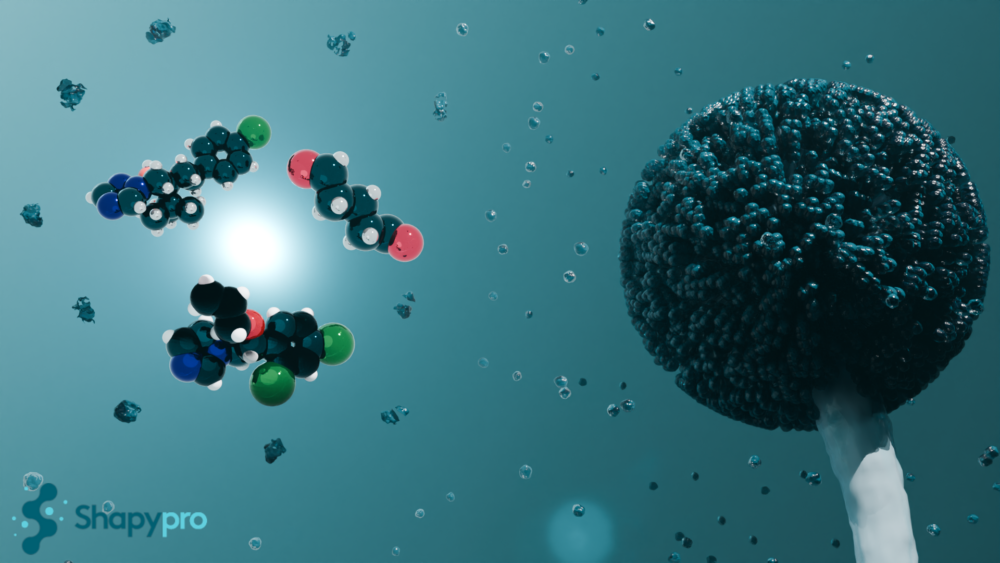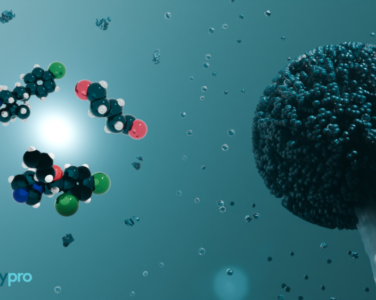The efficacy of chemical disinfectants and antiseptics is crucial to ensure safety in various industrial, food, domestic, and institutional applications. Specific efficacy tests are essential to ensure that these products work adequately under practical use conditions.
These specific efficacy tests not only confirm that disinfectants are effective against a wide range of microorganisms but also ensure that the products are safe for users and comply with regulations and quality standards.
The EN 1650:2020 and EN 1276:2019 standards provide standardized methodologies to evaluate the fungicidal, yeasticidal, and bactericidal activity in food, industrial, domestic and institutional areas.
The following describes the specific efficacy tests methods, organisms, and culture media used in these standards.
Specific efficacy tests of methods
Both standards employ common methods to evaluate the efficacy of disinfectants, including the dilution-neutralization method and the membrane filtration method. These methods allow determining the reduction of viable microorganisms after treatment with the disinfectant under controlled conditions.
The dilution-neutralization method involves mixing the disinfectant with a suspension of microorganisms and an interfering substance that simulates practical conditions. After a specific contact time, a neutralizer is added to stop the action of the disinfectant. Subsequently, the count of viable microorganisms is performed by culturing in appropriate media. This method ensures that the observed reduction in the number of microorganisms is exclusively due to the action of the disinfectant during the established contact time.
The membrane filtration method follows a similar principle, but instead of directly neutralizing the mixture, it is filtered through a membrane to separate the microorganisms. The bacteria or spores retained on the membrane are washed, neutralized, and cultured in an appropriate medium to perform the count of viable colonies. This method is useful when a physical separation of microorganisms is required before the neutralization and culturing process.
Interfering substances, such as bovine albumin, are used to simulate real use conditions of the disinfectant. Under clean conditions, a solution of bovine albumin at a low concentration is used, while under dirty conditions, it is used at a higher concentration to simulate significant organic load.
Specific efficacy tests or organisms and Culture Media
Different culture media are used in both tests depending on the type of microorganism and the applied test method.
Mandatory Organisms for Bactericidal Activity Evaluation under EN 1276:2019
In EN 1276:2019, Tryptic Soy Agar (TSA) is used as the primary culture medium for bacteria. TSA is a nutrient-rich medium that supports the growth of a wide variety of bacteria, providing an appropriate environment for their development and counting. The EN 1276:2019 standard evaluates bactericidal activity using several key test organisms.
- Escherichia coli (ATCC 10536): A Gram-negative bacterium commonly found in the human intestine, used as an indicator of fecal contamination. While part of the normal gut flora, some strains can cause severe infections, including diarrhea, urinary tract infections, and sepsis. This bacterium forms smooth, beige-colored colonies.
- Staphylococcus aureus (ATCC 6538): A Gram-positive bacterium responsible for various infections, from minor skin infections to serious diseases like pneumonia, meningitis, and sepsis. Staphylococcus aureus forms smooth, yellow-pigmented colonies.
- Pseudomonas aeruginosa (ATCC 15442): A Gram-negative bacterium that causes infections in individuals with compromised immune systems and is known for its resistance to multiple antibiotics and disinfectants. This opportunistic pathogen produces green-blue pigments and forms smooth colonies.
- Enterococcus hirae (ATCC 10541): A Gram-positive bacterium found in the intestines of humans and animals, used as a model organism in disinfection studies. While generally non-pathogenic, it can cause urinary tract infections and other complications in hospitalized or immunocompromised patients. This bacterium forms smooth, white to grey colonies.
- Enterococcus faecium (ATCC 6057): Used to evaluate bactericidal activity at temperatures above 40 °C. This bacterium is resistant to many disinfectants and antibiotics, making it important in specific disinfection studies.

Additional Organisms for Specific Bactericidal Activity Evaluation
EN 1276:2019 allows for the inclusion of additional microorganisms to ensure efficacy in specific conditions or environments not covered by the standard organisms.
- Salmonella Typhimurium (ATCC 13311): Used in specific applications where Salmonella contamination is a concern, responsible for salmonellosis in humans.
- Lactobacillus brevis (DSM 6235): Relevant in disinfection studies in fermentation and food production contexts due to its role in lactic fermentation.
- Enterobacter cloacae (DSM 6234): Used in specific studies to evaluate disinfectant efficacy in hospital environments, as this Gram-negative bacterium can cause nosocomial infections.
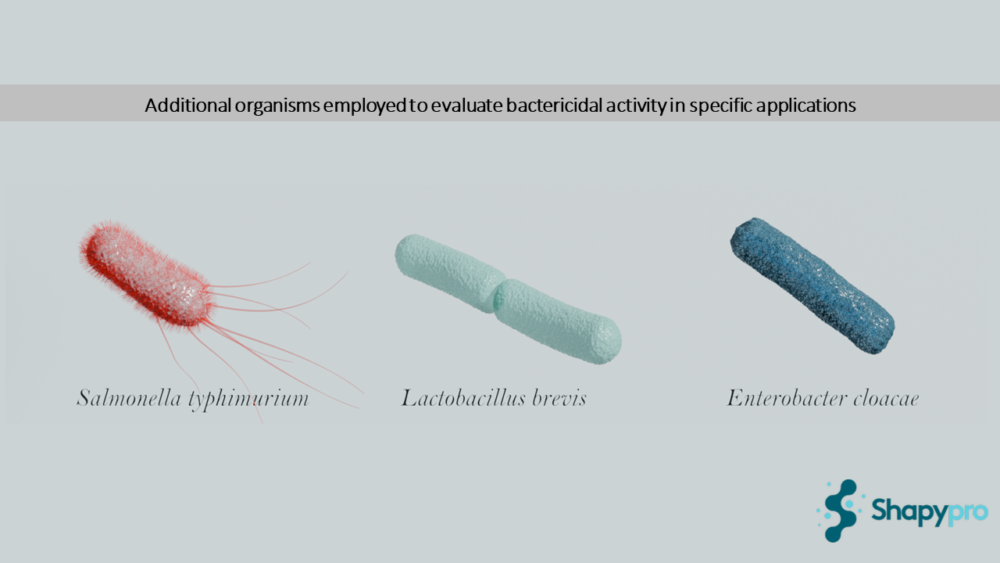
Mandatory Organisms for Yeasticidal Activity Evaluation under EN 1650:2019
In EN 1650:2019, Malt Extract Agar (MEA) is used as the primary culture medium for fungi. MEA is a specialized medium that provides the necessary conditions for the optimal growth of yeasts and molds.
The EN 1650:2019 standard focuses on yeasticidal activity, using Candida albicans (ATCC 10231) as the test organism. This pathogenic yeast can cause infections in humans, especially in immunocompromised individuals. Candida albicans is commonly used in disinfection studies due to its ability to form biofilms and its resistance to various antifungal treatments. It forms white to beige, creamy, and convex colonies.
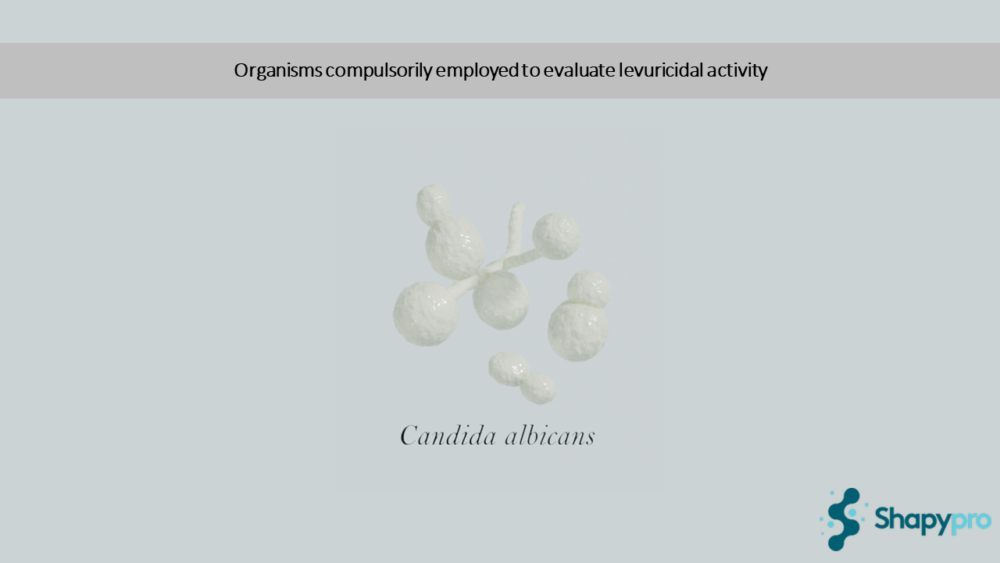
Additional Organisms for Specific Yeasticidal Activity Evaluation
In specific applications, the standard allows for the use of other yeast strains such as Saccharomyces cerevisiae (ATCC 9763) and Saccharomyces cerevisiae var. diastaticus (DSM 70487). Saccharomyces cerevisiae is used in the food and brewing industries and forms creamy, smooth colonies. The diastatic variety, Saccharomyces cerevisiae var. diastaticus, possesses diastatic enzymes that can break down complex starches into simpler sugars, making it relevant in the brewing industry and other contexts where its ability to ferment complex sugars can cause undesirable secondary fermentations and cross-contamination.
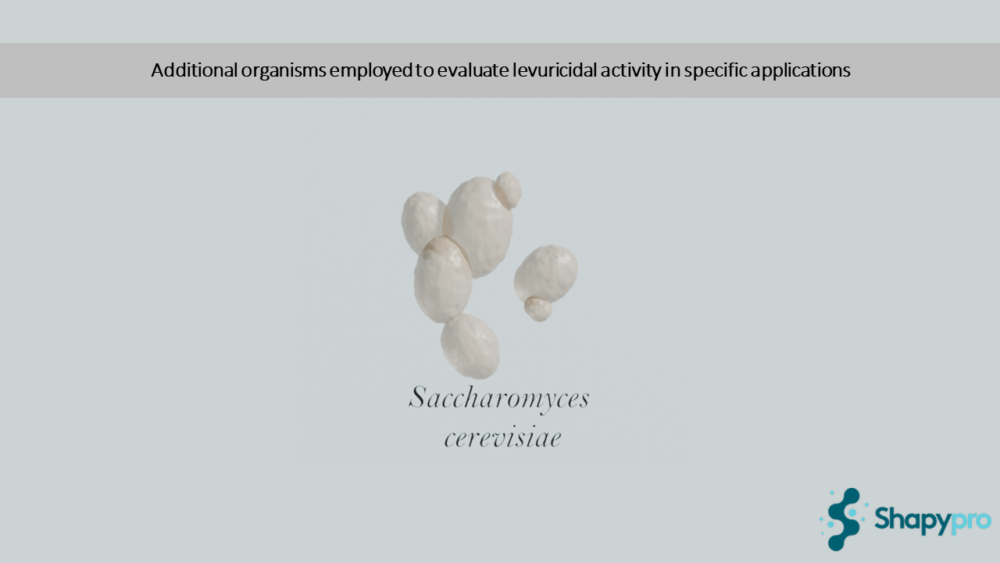
Mandatory Organisms for Fungicidal Activity Evaluation
For fungicidal activity evaluation, the EN 1650:2019 standard employs both Candida albicans (ATCC 10231) and Aspergillus brasiliensis (ATCC 16404). Aspergillus brasiliensis is a mold known for its resistance to disinfectants and its ability to degrade organic materials. This mold forms black colonies due to spore production and is used in the industry for enzyme production and other bioactive compounds.
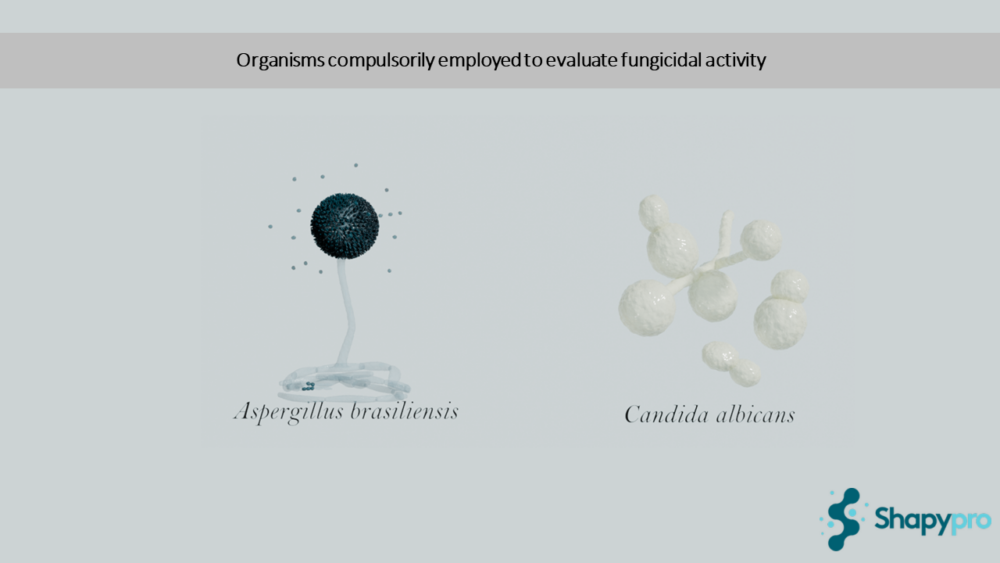
When is a Disinfectant Product Considered Effective?
For a disinfectant to be considered effective under these standards, it must meet certain log reduction requirements in the number of viable microorganisms. According to the EN 1650:2019 standard, a product must demonstrate a log reduction of at least 4 units in the number of viable microorganisms to be considered fungicidal or yeasticidal. On the other hand, according to the EN 1276:2019 standard, a product must show a log reduction of at least 5 units in the number of viable bacteria to be considered bactericidal.
In conclusion, the EN 1650:2019 and EN 1276:2019 standards provide rigorous and standardized methods to evaluate the efficacy of disinfectants and antiseptics.
These specific efficacy tests ensure that products are effective under practical conditions, considering the presence of interfering substances and different test microorganisms.
By following these standards, manufacturers can ensure that their products meet safety and efficacy requirements, protecting public health in various industrial, food, domestic, and institutional applications.
Why choose SHAPYPRO proficiency testing?
With over 10 years’ experience in assessing the efficacy of disinfectant products, we offer a proficiency testing programs ISO/IEC 17043 accredited under EN 14885:2022/AC:2023 requirements.
The breadth of our knowledge allows us to assist clients with new method development and R&D projects.
We offer a tailor-made ring trial.
Our data science manager is over the world well-know
Tests are performed following international validated standards and guidance.

